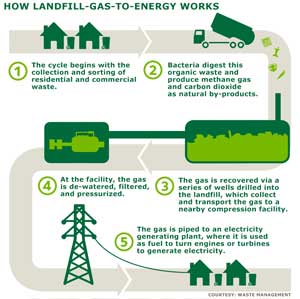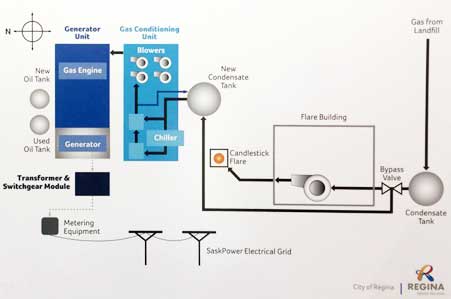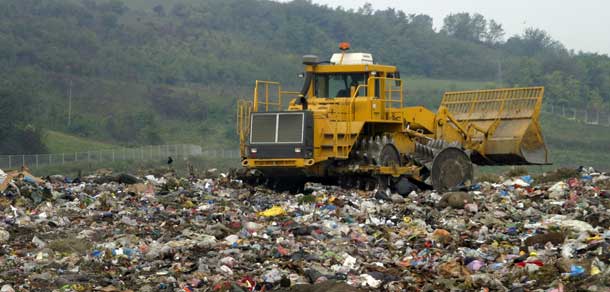Eight million tonnes of trash is not appealing to the average person. But for the city of Regina views a heaping mound of garbage as a potential treasure.
That’s because city officials and approximately 30 engineers from various disciplines recently introduced a reciprocating lean burn engine that burns landfill gas (methane) created by anaerobic degradation of organics in the landfill.
The system could generate more than $1 million in revenue annually for the city.
Recently the landfill-gas-to-energy model earned the City of Regina a Sustainability Award at the Regional Centre of Expertise (RCE) Saskatchewan Education for Sustainable Development recognition event, which recognizes organizations that are making our province more sustainable.
Environmentalists should also applaud the initiative.
The project is expected to convert approximately 30 000 tonnes of methane gas collected at the landfill into enough electricity to continuously power 1,000 homes. This is the equivalent of taking 8,000 vehicles off the road.
Engineers in hydrogeology, mechanical and electrical engineering, among others, played a role in developing of this system.
Here’s how it works:
 In 2008, the landfill began collecting gases through vertical wells. However, instead of that gas being converted into electricity, the gases were combusted with a candlestick flare.
In 2008, the landfill began collecting gases through vertical wells. However, instead of that gas being converted into electricity, the gases were combusted with a candlestick flare.
Four years later, 27 extraction wells now act as a vacuum to suck methane from the landfill. The gas collected is mostly methane – approximately 48-56 per cent. Carbon dioxide (42-45 per cent) and oxygen (1.5 per cent) also are collected on site.
The brain of this network is referred to as DIANE – the dialogue network. This module controls and monitors every aspect of the engine, blowers and conditioning units. Additionally it ensures gas has appropriate methane and oxygen concentrations, monitors all temperature and pressure in the engine and throttles the gas into the engine based on input from the gas analyzer.
Once the methane is removed, it’ll pass into a gas conditioning unit. This is the initial knockout period where chillers flow through a heat exchanger to cool the gas to 8 Celsius.
 From the gas conditioning unit, the gas then is transferred into a 20-cylinder, gas-burning engine that runs at about 1,800 rpm and weighs 14 000 kilograms. This engine then transfers the gas to a generator which in turn passes it on to a transformer for electrical output connected to SaskPower data.
From the gas conditioning unit, the gas then is transferred into a 20-cylinder, gas-burning engine that runs at about 1,800 rpm and weighs 14 000 kilograms. This engine then transfers the gas to a generator which in turn passes it on to a transformer for electrical output connected to SaskPower data.
The methane burns and the engine turns a generator that produces about 1 megawatt of power.
According to Greg Kuntz, P.Eng., the manager of environmental services with the City of Regina, there should be enough methane generation at the Regina landfill to power the facility for the next 50 years, though conditions at the landfill are considered very dry which results in less aggressive methane production.
The entire system is below ground to avoid freezing.
In conjunction with the project, the city and SaskPower agreed to a 20-year contract. The power company will only pay for the power the city produces, rather than a consistent flat rate.
Buying the power from the City of Regina will also help SaskPower move closer to its goal of generating 50 per cent of its electricity from renewable sources by 2030.
If the facility proves to be successful, an expansion could happen in the future. There is enough capacity to add a second generator, an expanded gas collection system and a bioreactor, and the potential to move to a full waste-to-energy system.
